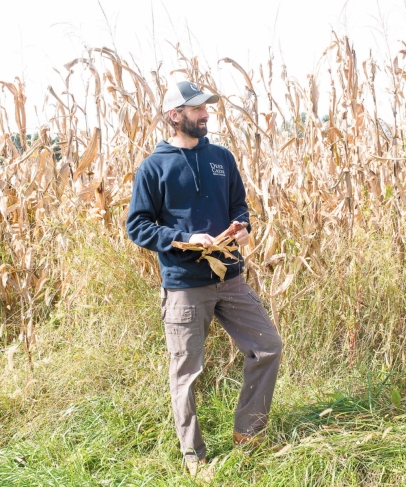Malt of the Earth
The Farm Behind Philadelphia’s Best Brews and Bread
ON A SUNDAY IN SEPTEMBER, the North Front Street Farmers’ Market is making a stretch of Fishtown a little more lively; a DJ provides the soundtrack while neighbors shop for produce, drink craft beer out of plastic cups and sample their way through the stalls.
Among the vendors, Deer Creek Malthouse has a clear plastic box with samples of malt— grains that have been soaked in water until they sprout and then carefully dried—which you can smell and taste and learn more about. Flours made from those malted grains sell briskly. Those plastic cups contain house-brewed beer, made with the malt produced about 30 miles outside of the city. But Deer Creek isn’t the only vendor using its malt here. At this tiny farmers’ market alone, you can find it in the whiskey from Red Brick Distillery, the beer from Saint Benjamin Brewing Company, and in the malted chocolate chip cookies (as well as the soft pretzels and most of the loaves) from Lost Bread Co., just two stalls down.
These Philly-based brands are all in on the secret: Deer Creek Malthouse is making something special.
Eight years ago, Mark Brault was working as a scientist for a pharmaceutical company and studying for his MBA on the side. “I was brewing [beer] as a hobby, and I got interested in agriculture,” he says. “I realized no one was making malt in the area.” Brault was getting his malt from the same places most other home and commercial brewers were getting it: industrial malting companies located in places as far off as Canada and Australia.
Back before Prohibition, breweries were often located on farms with malt houses—places that processed the grains used to make beer. So when Prohibition knocked out brewery production, it also killed the malting infrastructure with it. What’s sprouted back up in the past 85 years are a few massive malt houses that cater to large beverage producers, using barley varieties and making malt specifically for mass-produced beer.
As Brault learned more about the brewing process through each batch of beer, like any good scientist, he had more questions. “What is malt? Where does malt come from? Oh wow, no one is making malt here. How is malt made? Why is no one making malt?” he says. He knew from his own research that barley grew fairly well in Pennsylvania. “It seemed [that], in principle, malting was feasible if you could build some equipment and had some background in plant cell biology.” Brault was confident he could figure the rest out.
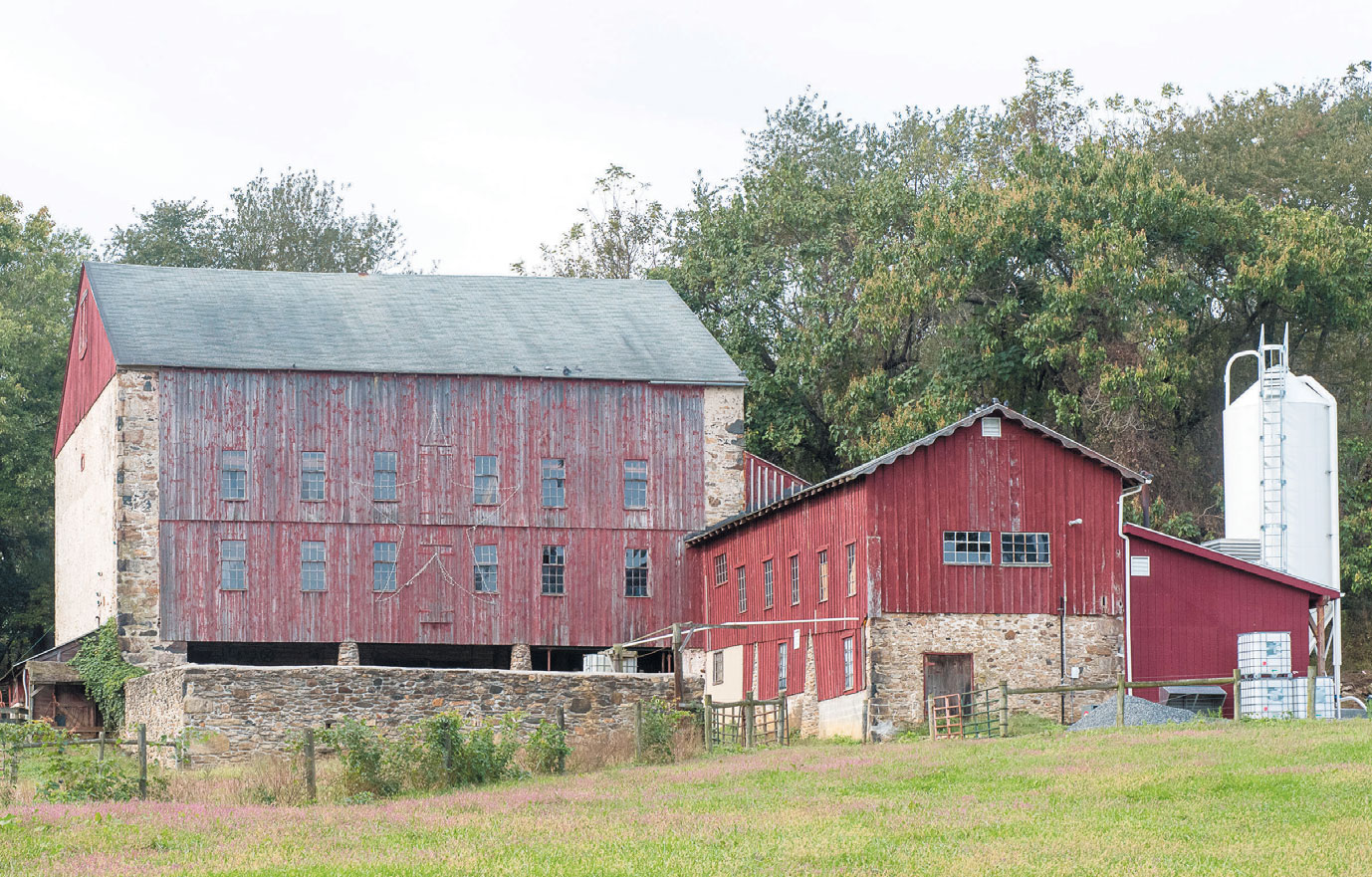 Deer Creek is PA’s fi rst malthouse since Prohibition
Deer Creek is PA’s fi rst malthouse since Prohibition
“People call malt pixie dust sometimes,” says Brault. “It’s an ingredient that packs a punch.” Artisans around the city think it’s magic, too.
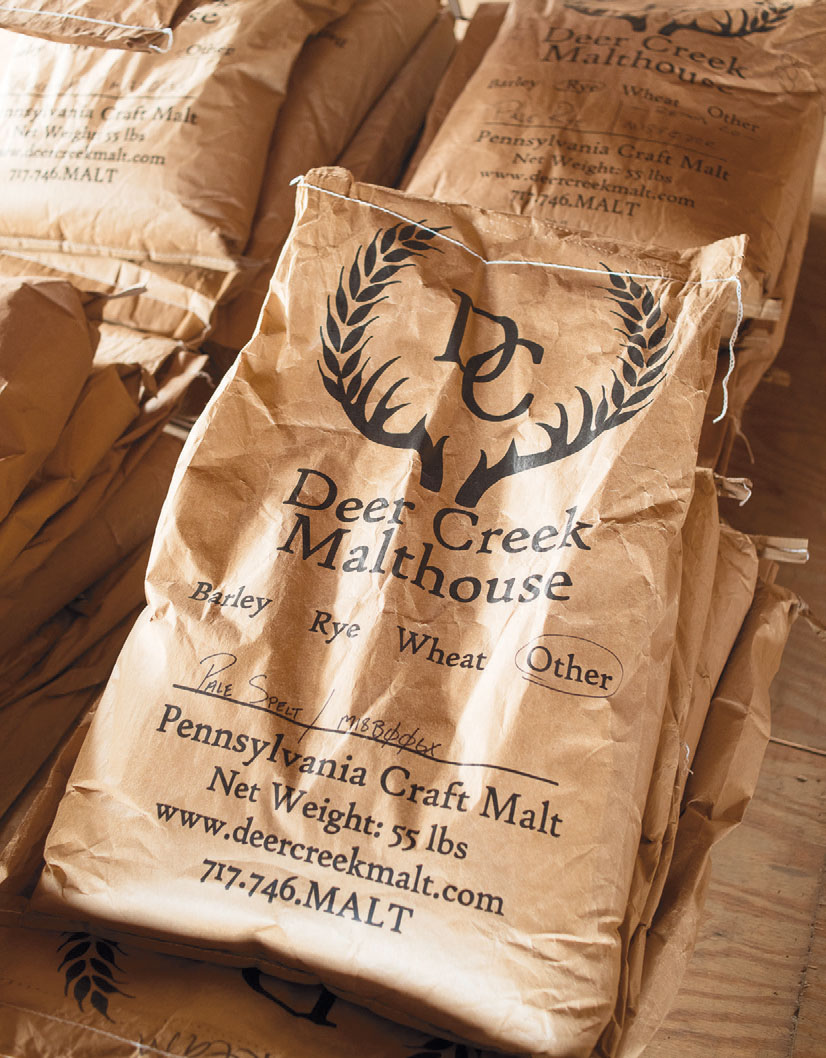

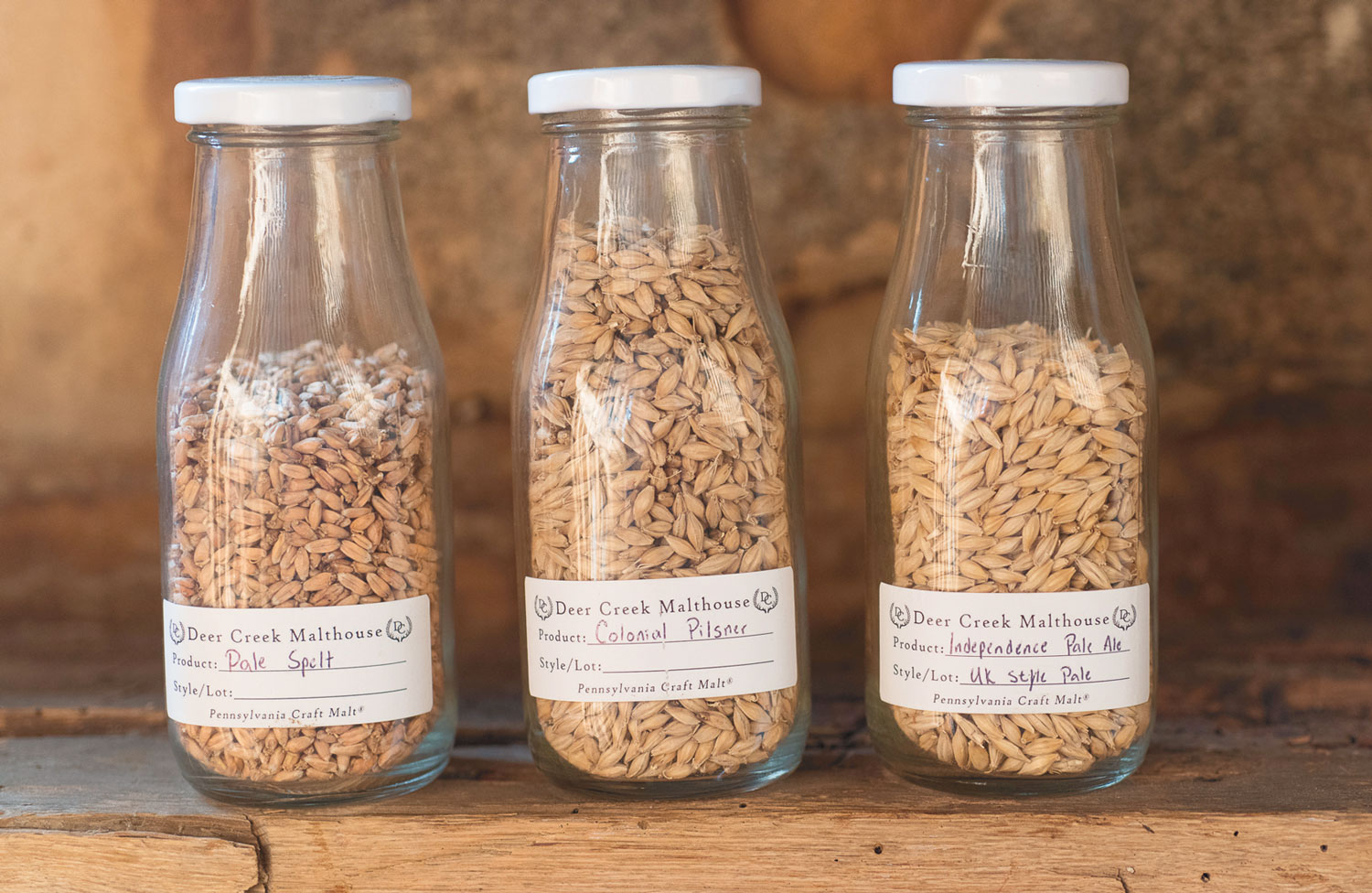
He started by educating himself— reading books and taking a course at the Canadian Malting Barley Technical Centre, which supports the malting and barley production industries in Canada. What he learned led him to open Deer Creek Malthouse in Glen Mills, PA, at the end of 2014.
In a way, Brault is rebuilding the state’s whole malting industry from scratch with Deer Creek. Innovation hasn’t happened much in this space since Prohibition. “We’re the first people to do this [in Pennsylvania] in 80 years,” says Brault. And they’re rebuilding it with a focus on creating malt with more unusual colors and flavors. “We’re trying to make something a little more flavorful and local, and we’re also specifically trying to create characteristics that are more suited for craft food and beverages,” he says. And to do that, the malthouse is using grains including spelt, buckwheat, sorghum and oats, in addition to the more traditionally malted barley and rye, and they are taking the same variety of barley and processing it in different ways.
Deer Creek grows some of these grains on its farm, home to roughly 41 acres of tillable land, and buys the rest from Pennsylvania- based farmers. To transform the grains into malt, they’re first steeped in a tank of water until they start to sprout. Next, Brault uses a centuries-old technique called floor germination, which involves spreading the grains on the ground in a sanitized room and manually turning them with rakes and shovels, giving them room to germinate (sprout those tiny white wisps). Visit the malthouse on a weekend, and you’re likely to see a four-inch-thick blanket of sprouting grain that smells like fresh-cut cucumbers.
After four days, Brault moves the grain to his kiln, a few feet away, where the massive oven dries the batch, halting its germination. It’s in the middle of this seemingly simple process that the grain becomes malt, thanks to enzymes that develop during germination and transform the grain’s starch into sugar.
This old-school method Deer Creek uses to produce its malt is just one of the ways the operation is different than the large malthouses. Most modern industrial malting operations make batches of 200 tons using germination machines, so they can’t be as nimble as Deer Creek, which can much more easily experiment with small and customized batches. “Our malt has a depth of flavor that really isn’t possible without using traditional floor germination technique,” says Brault.
It was, in part, this flexibility that first sparked interest for Alex Bois. Around the time Deer Creek opened, the founder of Lost Bread Co. was the head baker at High Street on Market. Bois, who has a reputation for his intense passion for the art and science of baking, has a background in brewing, too, and a deep understanding of the processes involved in both. He knew the importance of malt for both the flavor and structure of bread, and was eager to learn more about what Brault and his team were doing.
On his first visit to the farm, he brought Brault bread, and the two bonded over malt. “I was blown away by the quality, and their willingness and excitement to explore alternative uses for malt in food and beverage, besides the beer and whiskey industry,” says Bois. (The pair have recently collaborated on a beer, using Bois’s leftover table bread, which was served at a WHYY event in October.)
After Bois discovered Deer Creek, others in Philly’s culinary field sought them out, too. While the baker was experimenting with Deer Creek malts in bread, his colleague at High Street on Market at the time, Samantha Kincaid, used it to add a natural sweetness and complexity to her desserts. Now, at Cadence, the restaurant she co-owns with chefs Jon Nodler and Michael Fry, Kincaid has used Deer Creek smoked malt flour and milled malted barley flour in savory and sweet recipes, including her shortbread and a chocolate tart with malted flour.
Still others followed. Shane Confectionery uses the malt for some of its handmade chocolate and candy, as well as to make their malted milkshakes. Chefs at restaurants like Vetri Cucina, Osteria, Brigantessa and Walnut Street Café have used it, as have brewers and distillers around the city. New Liberty Distilling has ingredient- based brands of whiskey that use Deer Creek Malt, with one 100% rye whiskey made only with their malt, which sells for $100 a bottle.
That not only brewers and distillers around Philly are using Deer Creek malt, but also celebrated chefs and bakers, continues to amaze Brault. “It’s still really, really special going anywhere and eating or drinking something that has our malt in it,” he says. “We just know how much it took to have that be what it is, versus something that would probably be a little inferior and not quite as good.”
What it took to get there, in fact, was not only years of educating himself on what malt is and how it’s made, and zeroing in on exactly what type of grain they wanted to use (the team had 70 varieties of grains planted on the farm one year, just to screen it and determine how well it grew), but actually building the malting equipment from scratch.
This kind of specialty equipment, especially for a small scale operation, couldn’t be found on Amazon Prime with two day shipping. Brault and founding partner Scott Welsh (and in a few cases, friends and family and hired helpers) tackled projects like building a steep tank from pieces that included some they found in a salvage yard in Pennsylvania, and a single deck kiln—an oven with a stainless steel mesh floor where the malted grain is spread to dry and cure—from a shipping container. They also renovated the 152-year-old barn, insulating and painting it, and adding drainage, a heater and lights, among other things.
Now, Deer Creek is also focusing on building a retail business that could supply home bakers and brewers, while continuing to grow its wholesale operation by catering to customers with custom batches. (They’re even installing a specially-made piece of equipment for Lost Bread Co.—something Brault calls “an extreme example of trying to add value” for his customers.)
Simply put, Deer Creek is filling a void, creating local malts that make it easier for brewers, distillers, bakers and chefs to introduce whole new flavor profiles to their foods and drinks. “People call malt pixie dust sometimes,” says Brault. “It’s an ingredient that packs a punch.” Artisans around the city think it’s magic, too.
Deer Creek Malthouse
1629 Street Rd. Glen Mills
717.746.6258
deercreekmalt.com
“We’re trying to make something more flavorful, more suited for craft food and beverages.”
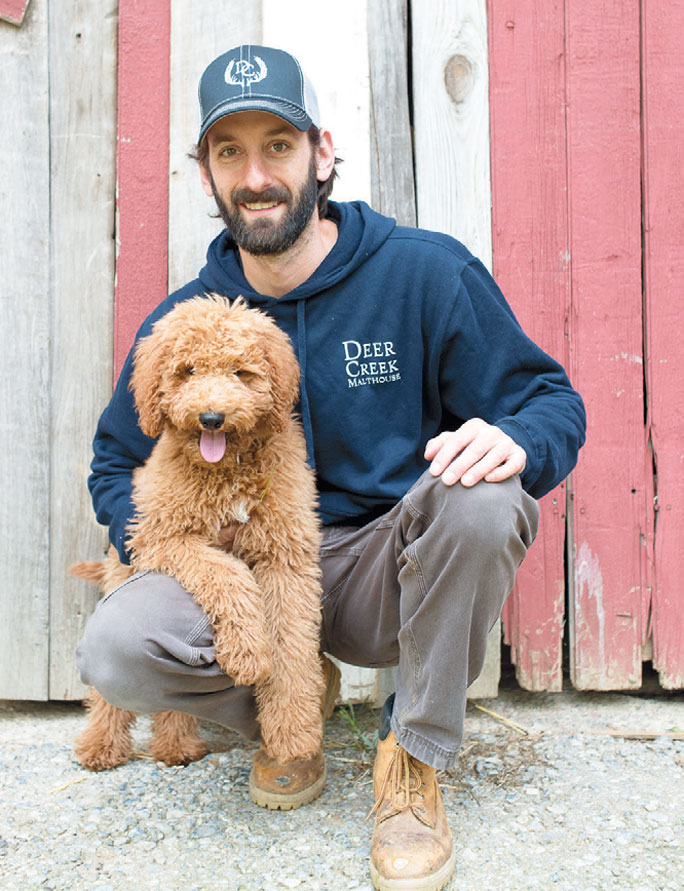

WHERE TO FIND DEER CREEK MALT IN PHILLY
New Liberty Distilling
1431 Cadwallader St.
Philadelphia
267.928.4650
newlibertydistillery.com
Lost Bread Co.
1313 N. Howard St.
Philadelphia
215.739.2904
lostbreadco.com
Cadence
161 W. Girard Ave.
Philadelphia
215.419.7537
cadencerestaurant.com
High Street on Market
308 Market St.
Philadelphia
215.625.0988
highstreetonmarket.com
Brewery ARS
1927–29 W. Passyunk Ave.
Philadelphia
215.960.5173
breweryars.com
Tired Hands Brewing Company
35 Cricket Terrace
Ardmore
610.896.7621
tiredhands.com
Metropolitan Bakery
262 S. 19th St.
Philadelphia
215.545.6655
metropolitanbakery.com


